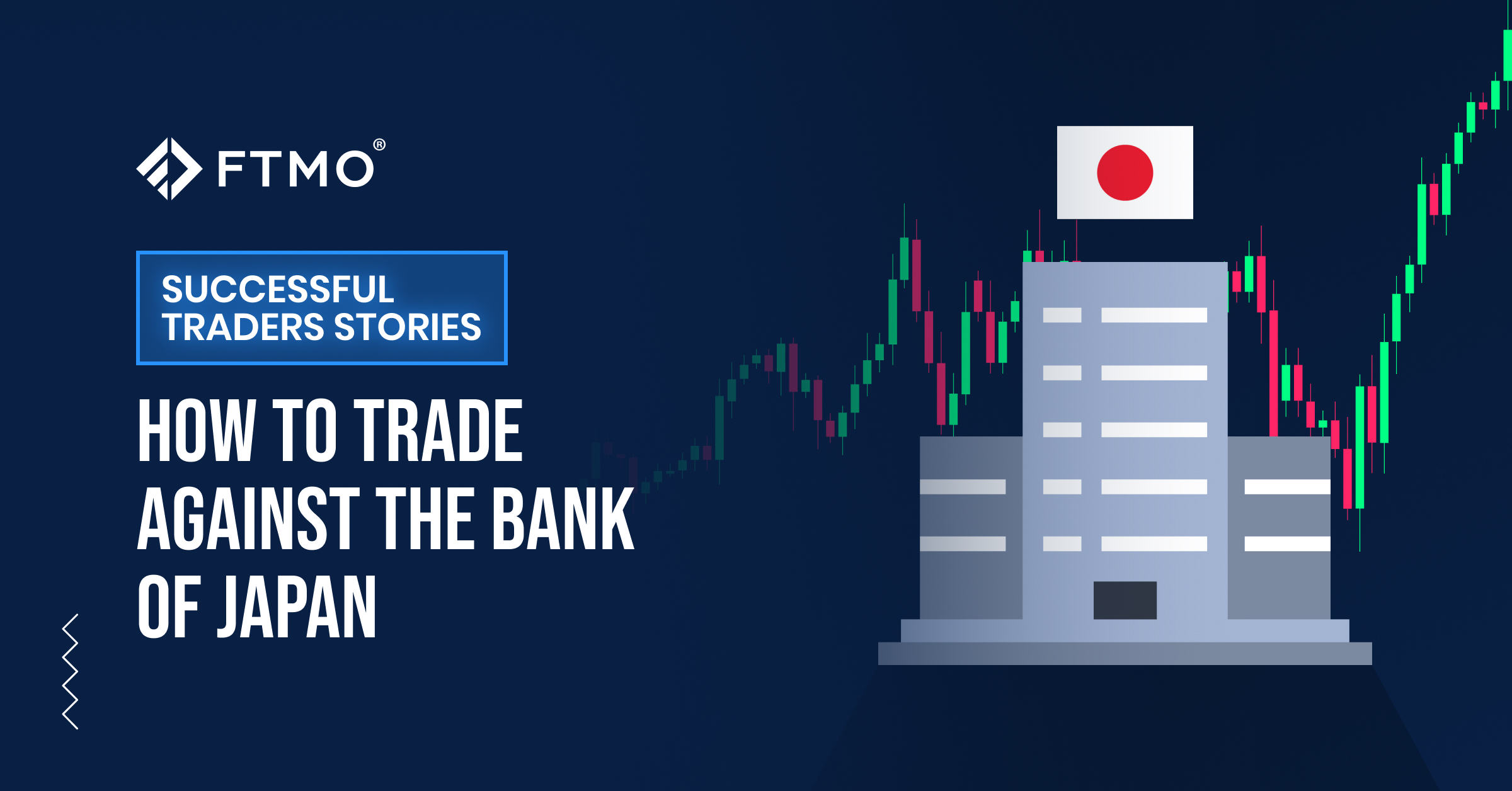
How to trade against the Bank of Japan
In today's part of the series on successful traders, we will look at an approach where the trader focuses on just one currency pair on which he is able to exploit market sentiment to the maximum. When good risk management is added to this, the path to above average profits is, at first glance, very simple.
It is not often that there is a fairly clear consensus on market direction. On the Japanese Yen pairs, we have seen this situation in recent days and weeks, as the Japanese central bank has clearly failed to combat the weakening of its currency. Although it raised its key interest rate from negative territory in March for the first time in 17 years, the Japanese yen lost around 15% between the beginning of this year until April and hit its lowest level against the dollar in 34 years. And even though the BoJ stepped in at 160 yen to the dollar to intervene in favour of its currency, traders were back to speculating on the yen's decline after a few days.
The trader whose account we will look at today has also joined this group. He has been in the green practically from the beginning of the trading session and despite a few streaks with slight losses, he has managed to maintain a rising balance curve throughout. He was also helped by a fairly consistent approach, with our consistency score standing at almost 80%.
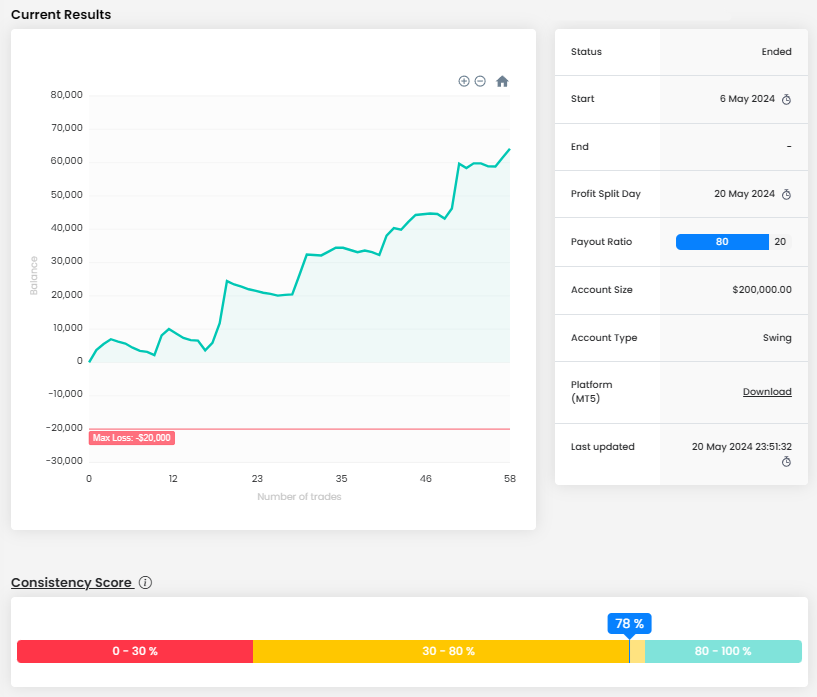
Fortunately, the trader avoided too much speculation against the trend, so the Maximum Daily Loss limit and the Maximum Loss were not a problem for him. The total profit of $64,188 is one of the highest in the last two months among our traders, and with an account size of $200,000 it is over 32% return.
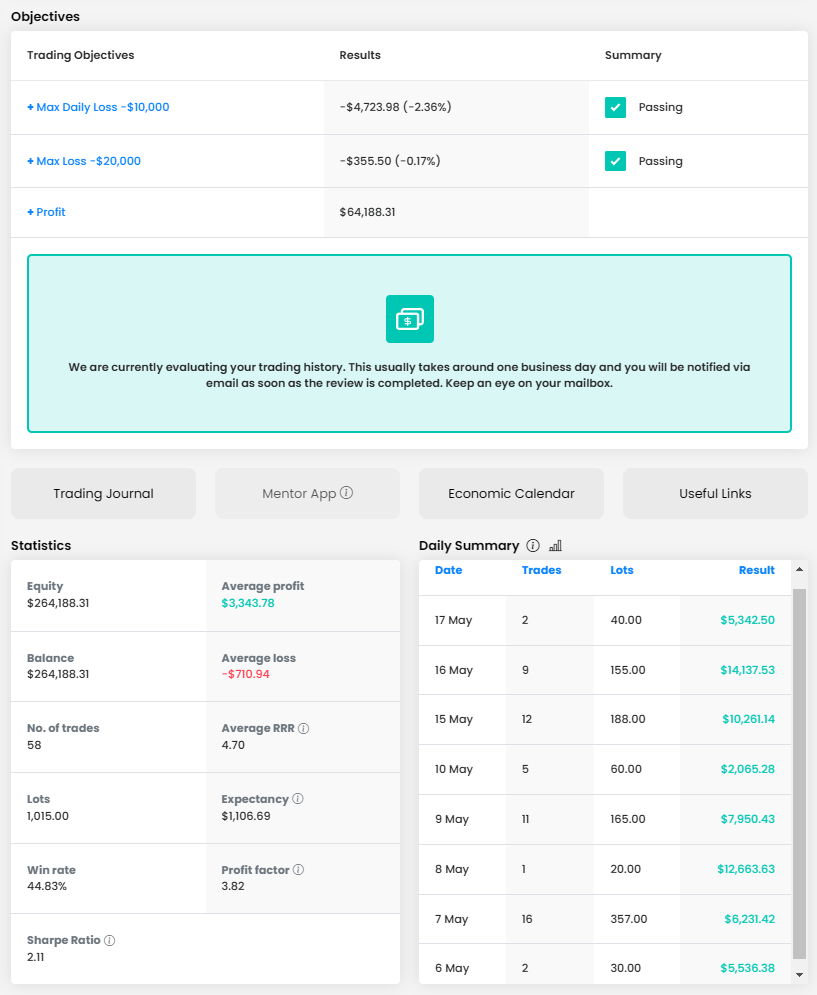
The Trader executed a total of 58 trades with a total size of 1,015 lots, which represents 17.5 lots per trade. However, the largest positions were 30 lots per trade. At first glance, this may seem like a lot, but with a given account size and a reasonable risk management and money management setup, this size of trades can be tolerated. The trader traded for only eight trading days, starting just as speculators on the weakening Japanese yen began to gain a stronger grip on the market again after the BoJ intervention.
The trader managed to keep the average RRR at 4.70, which is really high, and not every trader is able to reach such an RRR. Even with a win rate of 44.83%, it is not a problem to achieve an above average return.
The trading journal shows that the trader opened several positions a day and held them ranging from a few tens of minutes to several hours. He is therefore a classic intraday trader who never holds positions open overnight.
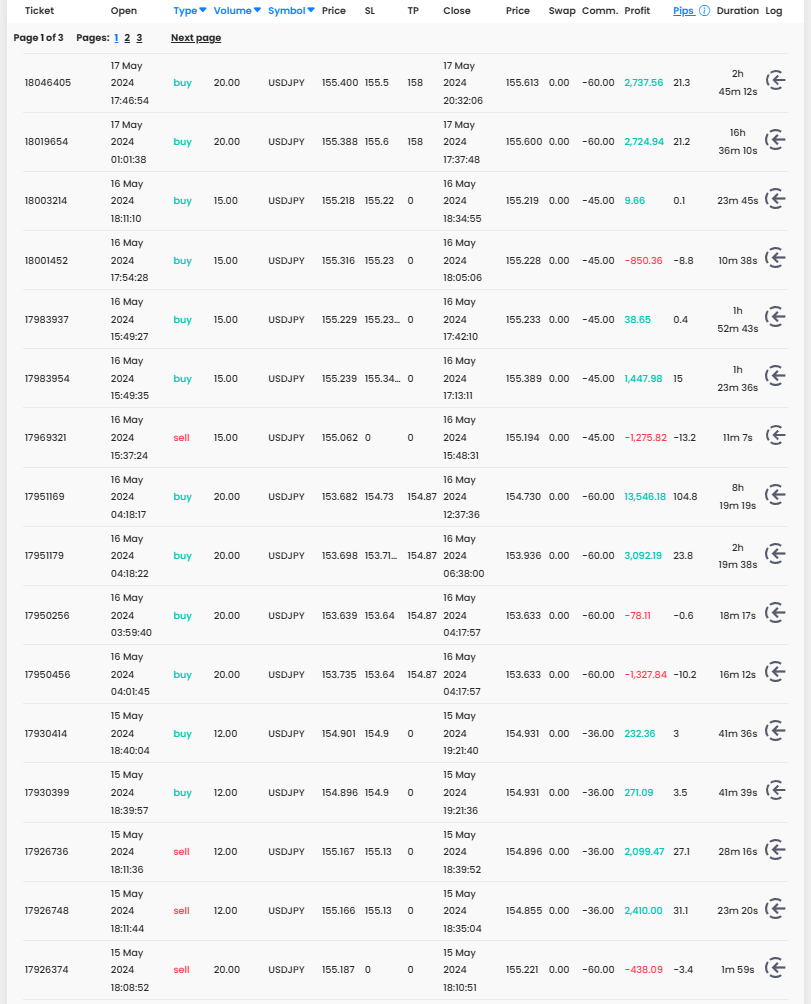
Considering the market situation, it is clear that the trader opened most of his positions long, but in a few cases he tried to make money on the short swing. We appreciate the setting of stop loss orders on most of the open positions, and also that the trader kept the losing trades " in check" and only once did the losses exceed the $2,000 mark.
As mentioned, the trader opened mostly long positions. Since he was trading at a time when there was a strong uptrend on the USDJPY pair, this approach was also reflected in the return he realised on long positions and the return he realised on short positions.
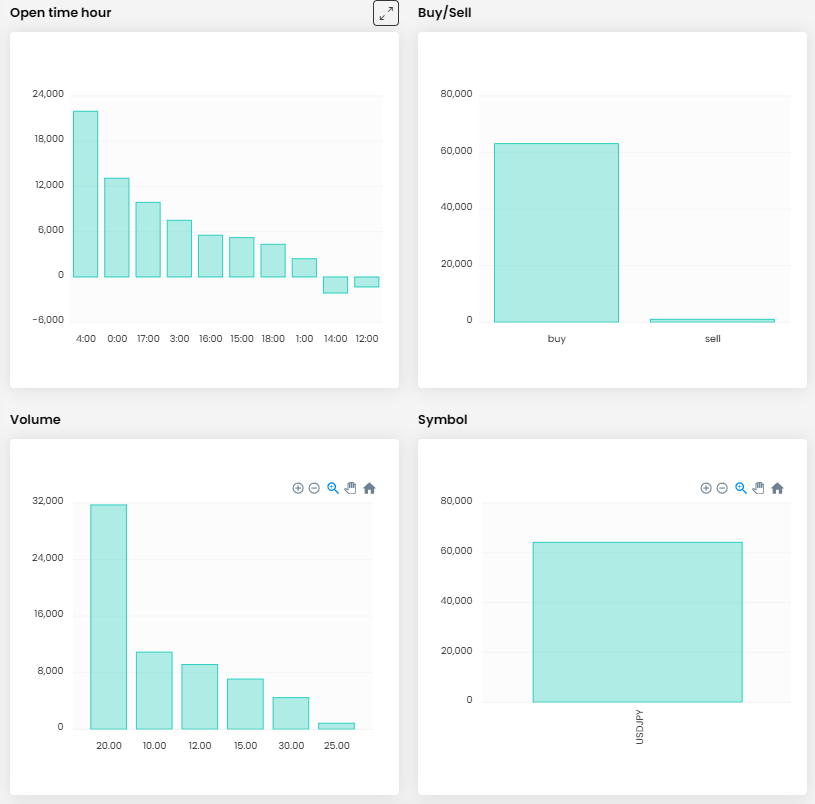
In the first picture, we see several long positions of a trader that he opened at the beginning of his trading period. In almost all cases, he opened long positions right after the price made a swing downwards, bounced off the local support and continued to rise. In all cases, the trader opened two positions and closed them with a trailing stop loss. In the first and third cases he moved the SL value quite aggressively, which paid off in the end, in the second case he let the price fall more significantly. In all cases, however, he opened the subsequent trade at the same level where he closed the previous one.
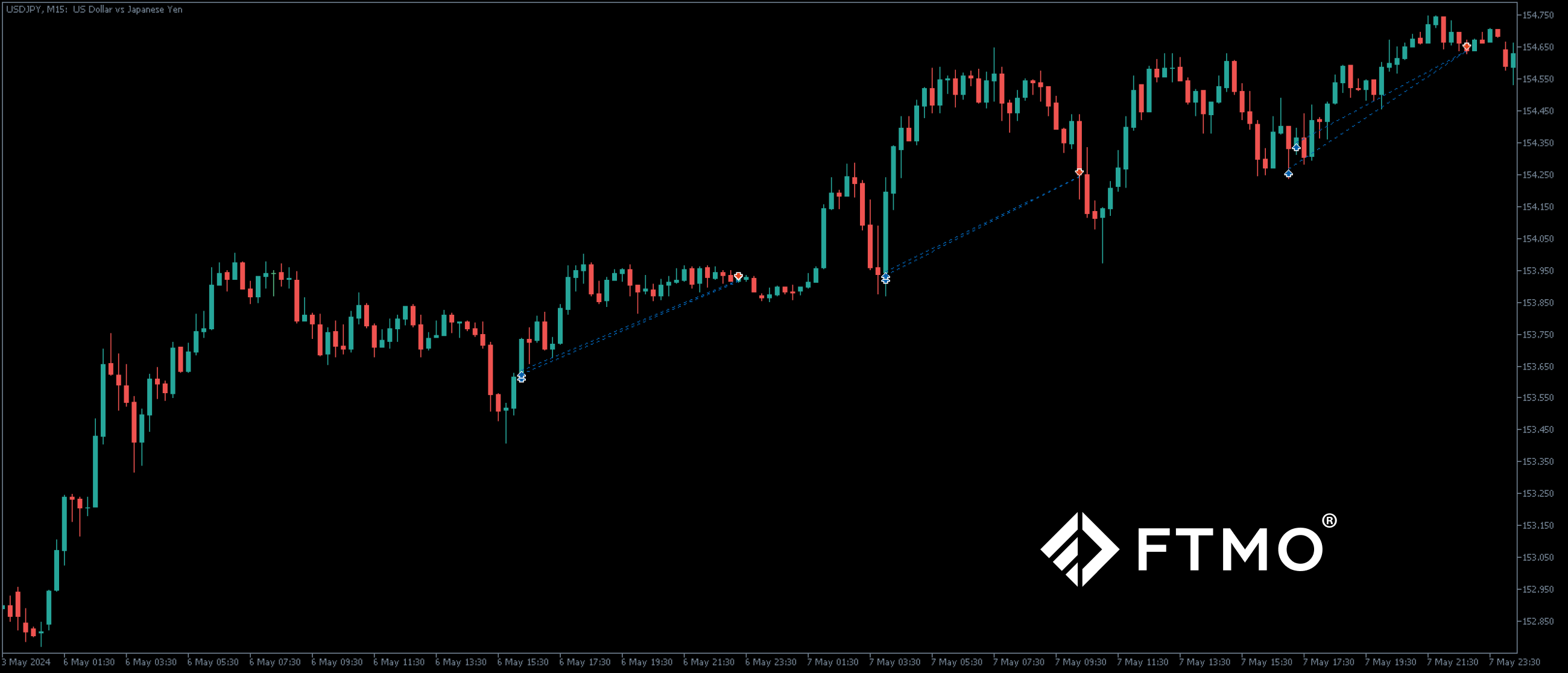
On the next trade, the trader recorded his highest profit in the trading period. Again, he managed to almost ideally move his stop loss, or rather he closed his trade just before the end of the trading hours of the day and clearly did not want to keep the trade open over the weekend.

Then, on Monday morning, he opened two more positions in the long direction, even well below the closing price of the previous trade, so in this case, closing the first position certainly paid off. At that time, macro data on both the housing and labour markets in Japan came out below expectations. So we can consider this trade as news trading, but since the trader has a swing account, it is certainly not a problem.
Note: Since we cannot clearly define the exact trader's strategy from the chart, this is only the private opinion of the author of this article. FTMO Traders are free to choose their strategy and as long as they do not explicitly violate our Terms and Conditions and follow our risk management rules, the choice of strategy and execution of individual trades is up to them.
About FTMO
FTMO developed a 2-step Evaluation Process to find trading talents. Upon successful completion you can get an FTMO Account with a balance of up to $200,000. How does it work?.









